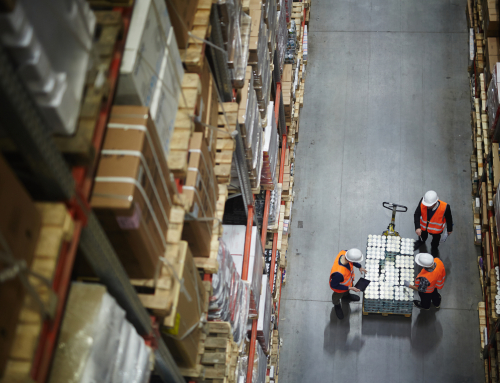On-demand warehouse space brings an innovative option to grow and develop
your business.
I founded Warehowz based on a challenge that kept tripping up the supply chain of my five product companies — the lack of flexible warehousing solutions that could adapt to my businesses’ ever-changing needs. During my 16 years of running those companies, no other issue posed a bigger obstacle to their growth.
I remember stepping
over inventory sitting on the floor in our offices because we simply could not
find short-term warehousing for our seasonal products. And that was only part
of the problem. It prevented us from exploring new markets, slowed down
delivery times, and forced us to pay premium dollars for outsourced fulfillment
that left us no choice but to give up our brand identity.
Poised to become a $25-billion industry by 2023, on-demand warehousing — of which Warehowz is part — is changing all of that. It not only offers an option that, until very recently, was not available, but also the promise of a growth-driven, agile supply chain.
How do you know if it would make sense for your business to add on-demand warehouse space to your portfolio of warehousing solutions? It is certainly not the panacea for all warehousing problems as many would have you believe. However, when it is applied to the correct supply chain challenges, the results speak for themselves.
Here are five scenarios where on-demand warehousing makes sense
1. You
run a seasonal business
If your business is highly seasonal — in other words, 20% to 30% of your sales take place during just a few months a year — tapping into a pool of on-demand warehouse space and services helps you mitigate the impact of the sudden spike. Rather than entering a long-term commitment for space you will not use for most of the year or storing inventory in less than ideal spaces (my own example above comes to mind), you can now use on-demand warehouse space to meet a quick surge in customer demand.
2.
You experience unpredictable growth
Few startups can create spot-on growth forecasts. That fact alone makes it difficult to partner with 3PLs, which typically rely heavily on your estimates. And, while your business may have enough volume in one location to support the operation and lease of a facility, the same arrangement may not yet make sense in other parts of the country where growth is still unpredictable. On-demand warehousing would have enabled my businesses — each with a single warehouse location — to temporarily store products closer to our customers as demand solidified, saving significant time and money on cross-country shipping.
3.
You want to speed up delivery times
A new CBRE report begins: “2019
will see a greater focus on last-mile and city logistics.” The 2019 Global Real
Estate Market Outlook is far from alone in noting how different industries have
been compelled to respond to ever-increasing consumer demand for faster
delivery times. JLL echoes that observation, arguing the trend could open the door to on-demand warehousing.
Again, going back to my own experience, I couldn’t offer two-day shipping to many of my customers from our single warehouse location. On-demand warehousing opens up whole new possibilities by letting you explore markets closer to your customers and addresses the all-too-familiar supply chain dilemma: How do I quickly move product to the end customer without running up cost?
4.
You see potential in new markets
Let’s say you want to expand into five metro areas and cut delivery times to one day. What impact would it have on sales? You won’t know unless you try it.
On-demand warehousing voids the traditional
constraints of prolonged contract negotiations with 3PLs or leasing multiple
warehouses to support demanding delivery requirements. With a pop-up performance
strategy, on the other hand, you can use on-demand warehouse space and the
associated warehouse management services as an expansion tool. If the low-risk trial
works out in your favor, you can permanently establish your business in those
markets. For my businesses, it would have served as a powerful growth engine.
5.
You seek brand control.
PwC’s 10th annual Global
Consumer Insights Survey introduces a brand-new
consumer-centric metric: return on experience, ROX. For companies to excel,
they need to consider how their brand interacts with customers that increasingly
want to feel personally connected to the products they purchase.
While the “Amazon Effect” has driven demand for fast delivery, it has also taken away the ability for brands to differentiate themselves with packaging. Warehowz brings this opportunity back to e-commerce companies, letting you maintain brand control at a time when it matters more than ever.
Do you want to learn more about
using on-demand warehousing as a tool for growth management? I’m here to chat.
Read more:



